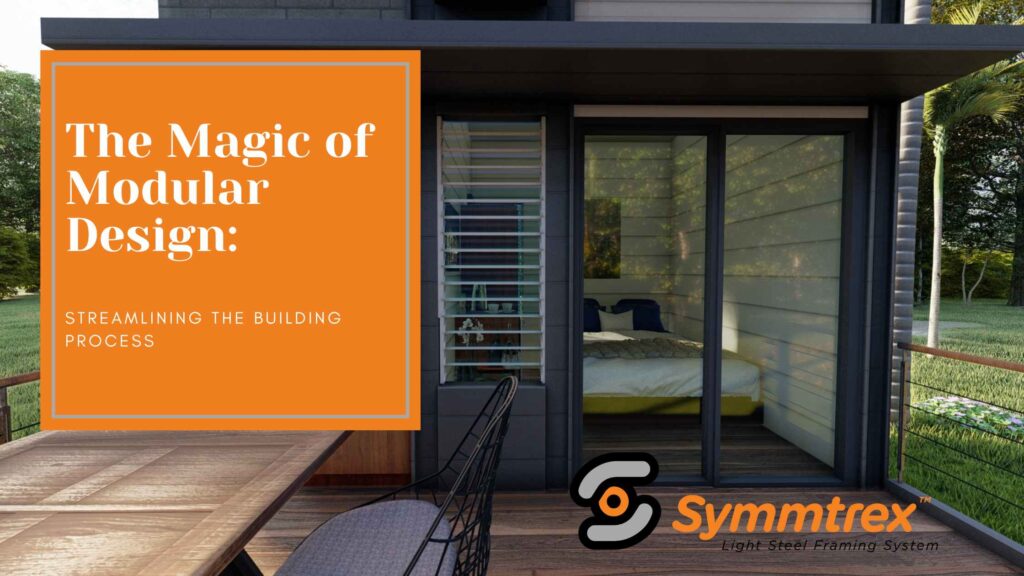
In the ever-evolving landscape of the construction industry, efficiency and innovation are at the forefront of every project manager’s mind. Enter the concept of Modular Design Streamlining, a revolutionary approach that is transforming how buildings come to life. This method is not just about building components in a factory; it’s about reimagining the construction process to be faster, more efficient, and incredibly flexible. Let’s explore the magic behind Modular Design and how it’s streamlining the building process.
Unveiling Modular Design Streamlining
What is Modular Design?
Modular Design involves the off-site construction of building sections or modules, which are then transported to their final location for assembly. This approach contrasts with traditional construction methods, where the entire structure is built on-site from the ground up. Modular units can include anything from complete rooms fully outfitted with electrical and plumbing fixtures to larger structural components that form part of a bigger building.
The Core of Streamlining
The essence of Modular Design Streamlining lies in its ability to simplify and expedite the construction process. By shifting much of the work to a controlled factory environment, many of the variables that can delay traditional construction projects—like adverse weather conditions, labor shortages, and scheduling conflicts—are mitigated or eliminated altogether.
The Benefits of Modular Design in Construction
Enhanced Efficiency and Reduced Timelines
One of the most significant advantages of Modular Design is the dramatic reduction in construction timelines. Projects can be completed up to 50% faster than traditional methods. This speed is due to the simultaneous progress made on-site (laying foundations, for example) and off-site (constructing the modules), coupled with the elimination of typical on-site delays.
Improved Quality Control
In a factory setting, each module is constructed under stringent quality control standards, ensuring consistency and high quality across all components. This environment also allows for better material management and reduces the likelihood of defects, leading to a superior finished product.
Sustainability and Waste Reduction
Modular Design Streamlining embodies sustainability. The precision of factory production results in minimal waste, as materials can be used more efficiently and effectively. Moreover, because much of the construction occurs off-site, the environmental impact on the building site is significantly reduced, preserving the local ecosystem.
Overcoming Challenges with Modular Design Streamlining
Logistics and Transportation
While Modular Design offers numerous benefits, it also presents logistical challenges, particularly regarding the transportation of modules to the construction site. However, careful planning and coordination, combined with innovations in logistics, can overcome these hurdles, making modular construction feasible for a wide range of projects.
Perception and Acceptance
Changing the traditional mindset of the construction industry is another challenge. Modular Design Streamlining must continually prove its worth against misconceptions of being less flexible or of lower quality than conventional methods. Through successful projects and advancements in technology, this innovative approach is rapidly changing perceptions and demonstrating its capability to deliver high-quality, adaptable, and efficient buildings.
Looking to the Future: The Role of Modular Design in Construction
As the construction industry continues to seek ways to improve efficiency, reduce costs, and minimize environmental impact, Modular Design Streamlining stands out as a key solution. Its ability to shorten project timelines, ensure quality, and support sustainability aligns with the industry’s goals.
The future of construction is likely to see even greater adoption of Modular Design principles. As technology advances and the benefits become more widely recognized, we can expect modular methods to become an integral part of construction processes worldwide.
In conclusion, the magic of Modular Design Streamlining lies in its transformative approach to building. It challenges conventional construction practices, offering a smarter, faster, and greener way to build. As the construction industry embraces this method, the streamlined process of Modular Design is set to redefine what is possible, proving that the future of construction is not just about building better but building smarter.

